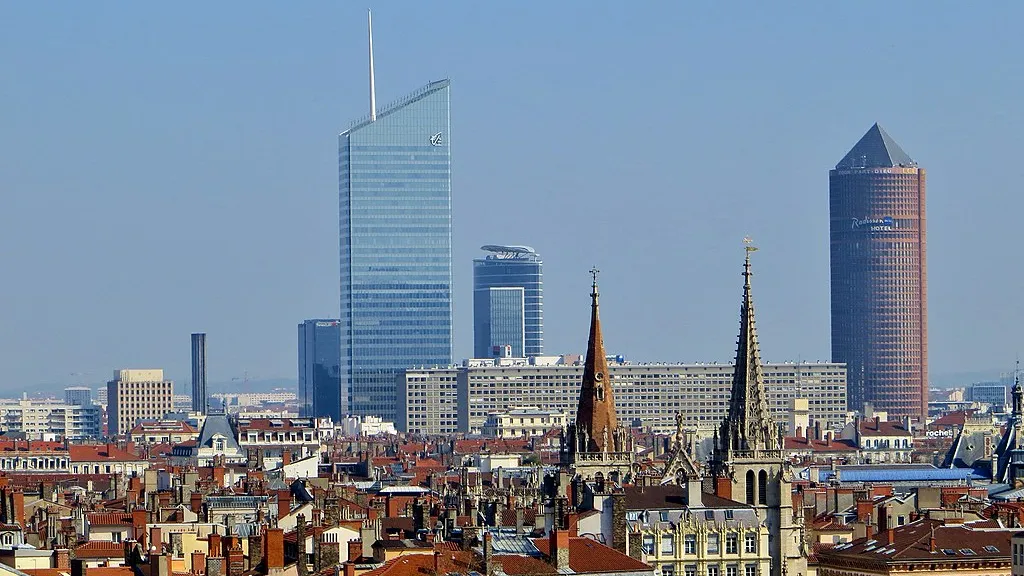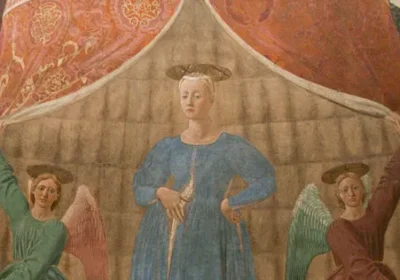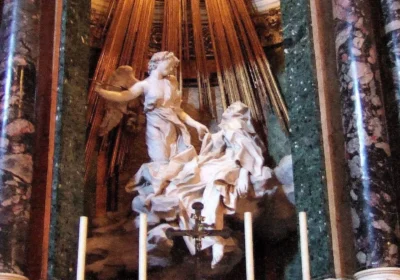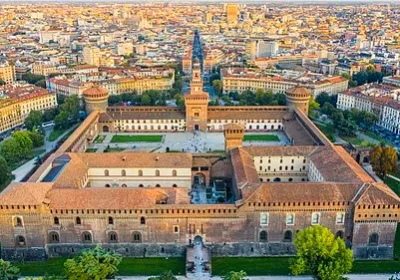Lyon, founded over 2,000 years ago at the confluence of the Rhone and Sona rivers, was once called Lugdunum and was the capital of the Gauls. Today it is the second largest city in France.
Two majestic ancient theaters and Gallo-Roman ruins – Fourvière and Saint-Romain-en-Gal in the south of Lyon represent the most important European archaeological center after Rome. Proof of this is the Museum of Gallo-Roman Civilization and the Archaeological Museum of Saint-Romain-en-Gal and the Jardin Archéologique Saint-Jean (Archaeological Gardens of Saint-Jean), a church complex dating back to the 4th century. An original baptismal vat, a ceremonial Gallic wagon, Claudius tables, mosaics depicting circus games, statues and more, including a Roman house and a Manécanterie (Church singing school) where novices were taught. The excavations help to visualize Lyon as it was during Roman rule and during the time of the early Christians, for, during the Roman Empire, Lyon was a stronghold of Christianity in Gaul. The first Christian church in this Roman province was built here.
The Basilica Notre-Dame de Fourviere (Notre-Dame de Fourviere) is a church on top of the Fourviere hill overlooking Lyon, next to the metallic tower of Fourvière (Tour métallique de Fourvière). The upper church is consecrated in honor of the Virgin Mary; the crypt beneath it is in honor of St. Joseph. It was built in a combination of Neo-Byzantine and Neo-Gothic styles by architect Pierre Bossan at the end of the XIX century.
The history of the basilica dates back to 1168, when Olivier de Chavannes, canon of Saint-Jean Cathedral, founded the church on the ruins of the former forum of the Roman Emperor Trajan, from which the name of the hill is derived (Latin Forum vetus, passed into French Fourvière).In 1643, when a plague ravaged the region, members of the Lyon city magistrate prayed together on the Fourvière hill to the Virgin Mary for the protection of the city. The epidemic soon ceased.
By the 19th century, the chapel had become so dilapidated that it threatened to collapse. In 1830 it was dismantled and reconstructed in its former form. Restoration work was carried out until 1845. In commemoration of the bicentennial anniversary of the deliverance from the plague on December 8, 1843 on top of the restored chapel was installed a statue of the Virgin Mary. The inauguration of the chapel and statue took place in 1852.
Since then, when the people of the city spontaneously placed candles on their windows in honor of the Virgin Mary, every year on December 8, Lyon hosts the Feast of Lights. This popular celebration has nowadays become the Festival of Lights – for several days, the city’s buildings come alive and are transformed by illuminations created by the world’s most renowned illuminators. Recognized as an art and a special technique, urban lighting is now used all over the world, for example in the illumination of the Hermitage in St. Petersburg or the Castillo del Moro in Havana.
The Cathedral of St. John the Baptist (Primatiale Saint-Jean-Baptiste) is the main church of Lyon since the XII century (the construction of the cathedral took three centuries). It is located in the Saint-Jean quarter of Old Lyon (Vieux Lyon), the medieval part of the city between Fourvière Hill and the Sona, and as part of it is a UNESCO World Heritage Site.The active astronomical clock located in the cathedral is the oldest in France. They trace their history back to the fourteenth century. After being destroyed by the Huguenots, it was restored from 1572 to 1600. They acquired their baroque appearance in 1655. In the XVIII century, a minute dial with an arrow appeared on them. Despite repeated repairs and alterations, the clock still contains some iron parts smelted at the end of the 16th century. It shows the hours, minutes, date, the position of the moon and sun relative to the Earth, and the rising of the brightest stars over Lyon. Four times during the day (at 12, 2, 3 and 4 p.m.) the clock chimes, accompanied by the movement of automaton puppets located at the top of the clock and depicting scenes on religious themes.
Designated a Unesco World Heritage Site in 1998, Lyon has the scope of beautiful European cities and the charm of French cities. With its old quarters restored according to the era and the tastes of their creators, with its illuminated colored facades, with its works of art, Lyon has been able to preserve its heritage: silks, printing, cinema and automobiles… It ranks among the most beautiful cities in the world.
Old Lyon is the largest Renaissance ensemble in France, proof of Lyon’s “Golden Age” when merchants and bankers came here for their trade. A walk in this quarter will reveal to you the extraordinary charms of architecture: cobbled streets, courtyards and passageways, spiral staircases… Especially interesting are the narrow secret passages that connect the streets, crossing one or more buildings.
Old Lyon is not only an exceptional architectural ensemble, it is also a residential neighborhood and a kind of living organism, filled with entertainment, art boutiques, museums, cafes, terraces and restaurants….
Twenty-four museums, including the Museum of Fine Arts, the Museum of Textiles and the Museum of Modern Art, located between International City and Golden Head Park, form an extraordinary cultural stroll. To experience the atmosphere of silk making, one must climb Croix-Rousse, a neighborhood perched on a light-filled hill.
Art can be found everywhere in this city, even on the facades of the buildings, many of whose walls are decorated with paintings by the masters of the City of Creation.
The Lyon Opera, an 18th century building with a spectacular glass roof (added by Jean Nouvel) that emits a purple light at night, offers an exciting program throughout the year (ballets, concerts, operas). Lyon has a wide range of cultural events, such as the Biennale of Dance and Contemporary Art.
Lyon, the capital of silk, has become an inevitable meeting point for fashion and shopping. Since 1466, Louis XI chose Lyon to establish a silk industry that turned the city into a rich intersection of trade and world cultures. Lyon even today remains a center of silk research. Since the creation of pioneering institutions like the University of Fashion, designers have been creating and developing diverse fields – prêt-à-porter (literally “ready-to-wear”), lingerie, costume jewelry and jewelry, design and decor.
The city has more than 70 luxury stores, concentrated in the heart of the “Golden Square” (Carre d’Or) between Place Bellecour (one of the oldest in Europe, with its statue of a mounted rider – Louis XIV) and Jacobins, as well as in the “little Soho” on the slopes of the Croix-Rousse hill.
Quite naturally, it is in the capital of the Rhône-Alpes region that the world’s largest textile, lingerie and beach fashion show – Lyon Mode City & Interfilieres – takes place. It takes place every year in early September and attracts more than 20,000 visitors of 95 nationalities.
Lyon is the birthplace of many famous scientists, politicians, artists and cultural figures. Here were born physicist and mathematician André Ampere, historian Marc Bloch, shot by the Germans in 1942, the founder of the French violin school, composer Jean-Marie Leclair, the founder of the now world-famous annual inventors’ competition, police prefect Louis Lepine, a remarkable pilot and writer, author of “The Little Prince” Antoine de Saint-Exupéry.

















